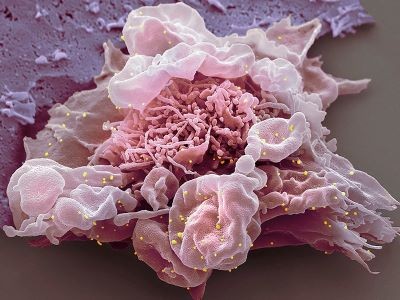Immunity acquired through previous infection is less effective against Omicron than against other variants, but the risk of severe COVID-19 remains low.
By Smriti Mallapaty, February 16, 2022
Since the Omicron variant of SARS-CoV-2 was first detected, the number of people reinfected with the coronavirus has been rising sharply — a trend that was not observed with previous variants. Researchers say that the new variant is probably driving the surge because it is able to evade the body’s immune defences.
“The situation now is really different. We’re talking about a variant with lots of immune-evasive properties,” says Laith Abu-Raddad, an infectious-disease epidemiologist at Weill Cornell Medicine–Qatar in Doha.
Studies have shown that the variant can outwit immunity induced by vaccination. Now Abu-Raddad and others are revealing how well Omicron can evade antibodies produced during previous SARS-CoV-2 infections. “The ability of Omicron to infect people with either vaccine- or infection-derived immunity is a key part of what made the recent surge so large,” says Marm Kilpatrick, an infectious-disease researcher at the University of California, Santa Cruz.
Understanding reinfection rates is crucial for assessing “how infections might surge and if hospitals will be able to cope”, says Catherine Bennett, an epidemiologist at Deakin University in Melbourne, Australia.
COVID-19 again
The first signs of Omicron’s immune-evasive properties came from data collected in South Africa, says Bennett. In November last year, researchers showed higher-than-expected rates of reinfection compared with those of previous waves1. Similar trends have now been documented elsewhere.
In England, more than 650,000 people have probably been infected twice; most of them were reinfected in the past two months, according to data collected by the UK Health Security Agency (see ‘Rising reinfections’). The agency considers an infection a ‘possible reinfection’ if it took place at least three months after a previous one, but does not confirm that these are separate instances through genetic sequencing of the virus. Before mid-November, reinfections accounted for about 1% of reported cases of COVID-19, but the rate has now increased to around 10%.
The UK Office for National Statistics in Newport has also seen a sharp increase in possible reinfections in recent months, as part of its random sampling of households across the country. The survey counts a possible reinfection if four months have passed since the previous one. The reinfection risk was 16 times higher between mid-December last year and early January this year when Omicron dominated, than in the 7 months leading up to December when Delta was the dominant variant.
Such surveys could be underestimating the true rate of reinfection because some infections go undiagnosed, and some could have happened sooner after the first infection — especially in countries where cases of Omicron quickly followed a Delta wave, says Bennett.
Multiple factors could explain the spike in reinfections, she says. With more people now already exposed to the virus, there is a higher chance of seeing reinfections. Omicron’s speedy spread also increases the chance. But the variant’s ability to evade immunity is probably playing a part, says Bennett.
Immune evasion
In a correspondence2 published in The New England Journal of Medicine this month, Abu-Raddad and his colleagues measured the extent to which Omicron could evade immunity, as part of a nationwide study of infections in Qatar since the start of the pandemic. They found that although having previously been infected was around 90% effective at preventing an infection with the Alpha, Beta or Delta variants, it was only 56% effective against Omicron.
However, Abu-Raddad is encouraged by the results. Most reinfections occurred about one year apart, showing that a previous infection offers immunity for some time. And protection against severe COVID-19 caused by Omicron remained high, at around 88%.
But Shabir Madhi, a vaccinologist at the University of the Witwatersrand in Johannesburg, South Africa, says that the study probably missed many infections that were asymptomatic or mild and were therefore not recorded, so it might be overestimating the effectiveness of a previous infection against Omicron. He expected much lower protection against infection. Laboratory studies have shown that Omicron can successfully evade virus-blocking antibodies generated from earlier variants, which are a good proxy for protection against infection3,4.
Ultimately, Abu-Raddad says that studying reinfections will help researchers to understand what SARS-CoV-2’s transition to an endemic virus will look like.
doi: https://doi.org/10.1038/d41586-022-00438-3
References
Pulliam, J. R. C. et al. Preprint at medRxiv https://doi.org/10.1101/2021.11.11.21266068 (2021).
Altarawneh, H. N. et al. N. Engl. J. Med. https://doi.org/10.1056/NEJMc2200133 (2022).
Cele, S. et al. Nature https://doi.org/10.1038/s41586-021-04387-1 (2021).
Wilhelm, A. et al. Preprint at medRxiv https://doi.org/10.1101/2021.12.07.21267432 (2021).
(Sources: Nature)














Đăng nhận xét